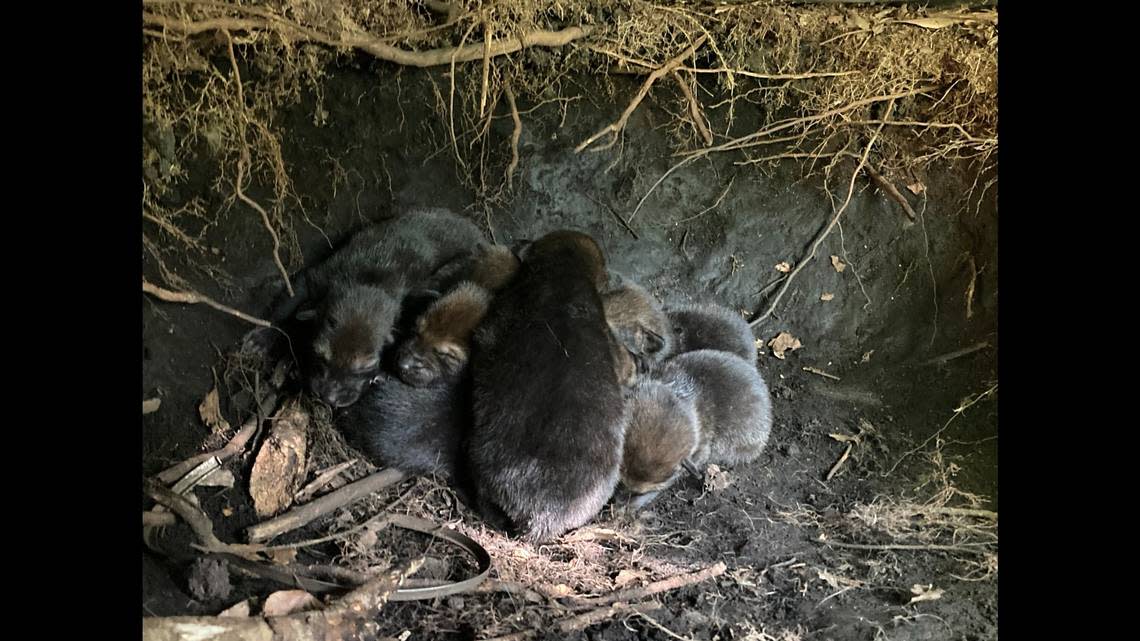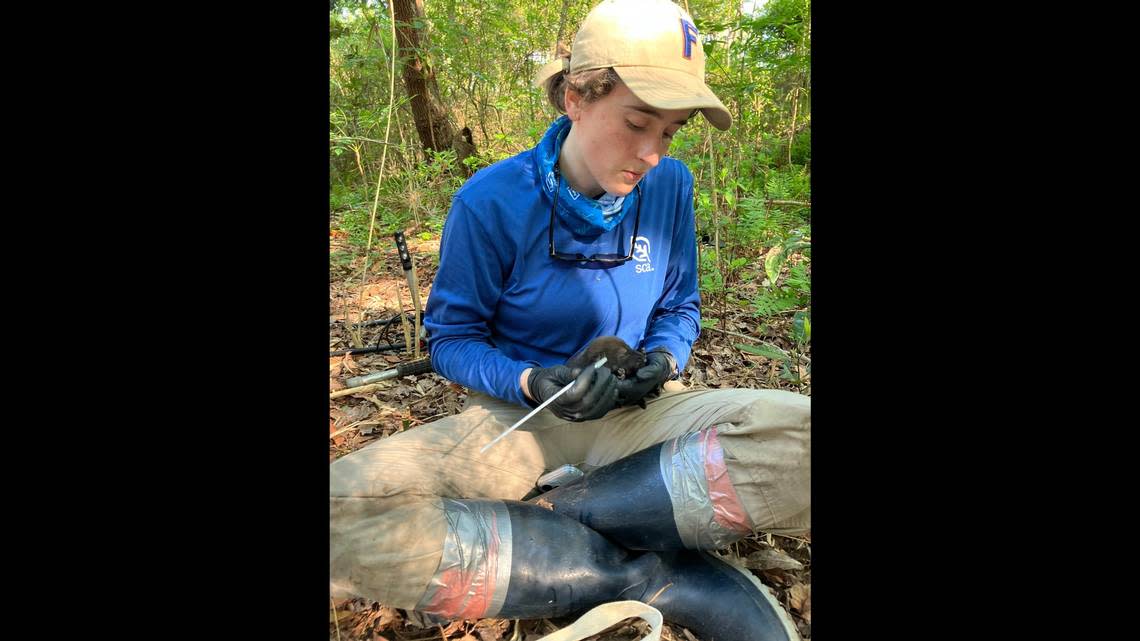Newborn red wolves bring hope to species with only 20 in the wild. See them cuddle
Only about 20 red wolves remained in the wild after the species suffered a “tragic loss” — then a litter was born.
Red wolves have been called the “world’s most endangered wolf” after the species disappeared from its range in the eastern and central U.S. and was declared extinct in the wild in 1980, according to the U.S. Fish and Wildlife Service.
In recent years, a restoration program in eastern North Carolina has encouraged the wolf population to return to the wild, albeit in small numbers, the News & Observer reported.
Now, approximately 260 wolves are being raised in captivity, and 18-20 live in the wild, according to the most recent estimates.
The Red Wolf Recovery Program made history as the first effort to reintroduce a large carnivore that had been declared extinct in the wild in the U.S.

The wolf population rose dramatically for a while, reaching a peak of 120 in 2012, before the species declined again, largely due to wolves being shot or hit by cars, officials said.
The species faces considerable threats from humans, and wildlife experts said no litters were born in the wild from 2019 to 2021.
Then, in September 2023, the species faced another setback when the breeding male in the population was killed in a suspected vehicle strike, officials with the Red Wolf Recovery Program said.
Conservationists had to think fast as breeding season approached.
They took a male wolf born in captivity in Washington and brought him to the Alligator River National Wildlife Refuge in eastern North Carolina, where he was acclimated in a pen before he was released into the refuge in January for the mating window.
Their “bold attempt” paid off, and the female who had birthed the last two litters took a liking to him, conservationists said in a May 3 news release.

“Close monitoring throughout the winter and early spring began to raise hopes that this somewhat of a long-shot new pairing was looking more and more like it was going to be successful,” officials said.
Then, on April 18, their hopes were confirmed.
“One peek inside the wild den revealed just how successful it was as we counted out 8 small, content Red Wolf pups all cuddled together in a ball,” conservationists said.
The pups appeared to be about 9 days old, with their eyes still shut. Experts said they moved in quickly to evaluate the pups, microchip them and swab their cheeks for genetic tests.
The third litter born in three years, following the death of the breeding male and several years without a litter, is “key” to the species’ recovery, wildlife experts said.
Alligator River National Wildlife Refuge is on a peninsula near the Outer Banks, about a 185-mile drive east from Raleigh.
Endangered red wolves can only be found in NC. Here are 7 things to know about them.
Can a lone wolf affect the environment? Red wolf researchers have surprising data.
‘Golden’ predator — the source of legends — caught on trail cam in Thailand. See it
Here’s a timeline of milestones in the attempted recovery of the red wolf in NC
